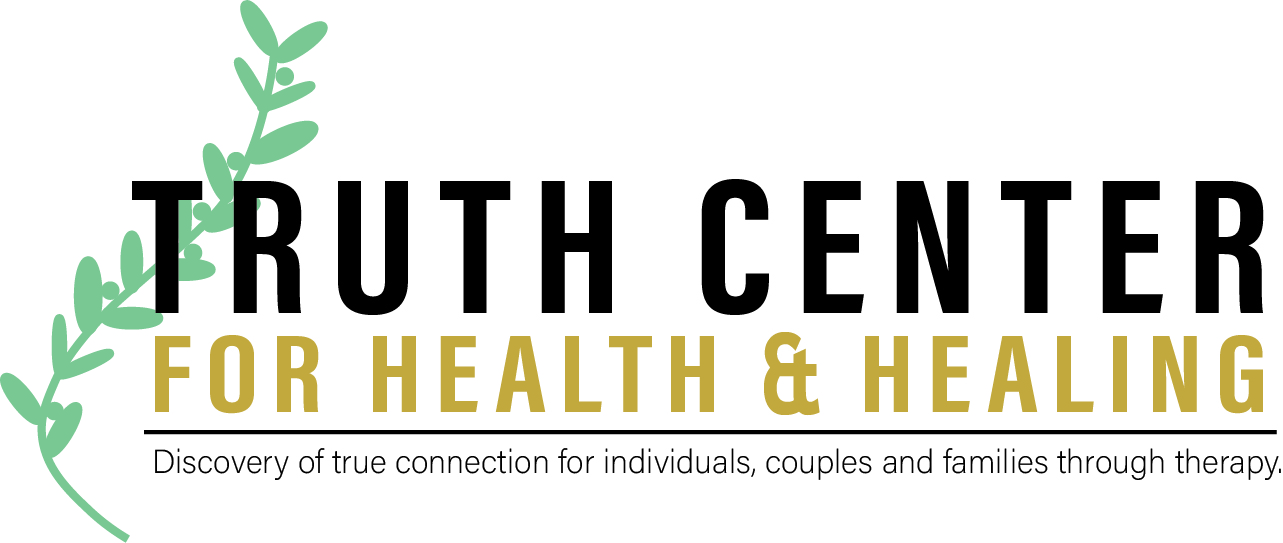What if healing from trauma could be as simple as shifting your focus? Imagine carrying the weight of past experiences, memories that resurface unexpectedly, emotions that overwhelm, and thoughts that disrupt your peace. Now, envision a therapeutic approach that helps you process these memories, not by reliving them in detail, but by shifting how your brain stores and recalls them. This is the essence of Eye Movement Desensitization and Reprocessing (EMDR) therapy.
At the Truth Center for Health & Healing, we specialize in EMDR therapy, offering a compassionate and culturally affirming approach to trauma recovery. Our team is dedicated to helping individuals reclaim their lives from the grip of past traumas, fostering healing that honors your unique identity and experiences.
Understanding EMDR Therapy
EMDR is a structured psychotherapy approach designed to alleviate the distress associated with traumatic memories. Developed in the late 1980s by Dr. Francine Shapiro, EMDR combines elements of cognitive-behavioral therapy with bilateral stimulation, typically guided eye movements, taps, or auditory cues, to facilitate the processing of traumatic memories.
The therapy is grounded in neuroscience and the brain’s natural information processing system. When a person experiences trauma, the memory of that event can become “stuck” in the nervous system, creating persistent emotional and physical distress. EMDR helps the brain process these memories fully, integrating them into a more adaptive framework so they no longer trigger intense reactions.
Unlike traditional talk therapy that may focus heavily on discussing trauma, EMDR is experiential and engages the brain in a unique way. It allows clients to access memories indirectly, reducing the emotional intensity while still working through the root of the problem. Many clients report feeling relief much faster than with other approaches, sometimes within just a few sessions.
The Eight Phases of EMDR Therapy
EMDR therapy near Media, PA and the surrounding areas follows a structured, eight-phase approach. Understanding these phases helps clients feel prepared and informed about the process.
- History Taking and Treatment Planning: The therapist gathers detailed information about your life history, trauma experiences, and mental health goals. This helps identify which memories to address first and establishes a roadmap for treatment.
- Preparation: Building trust is crucial. The therapist explains the structure of EMDR, addresses concerns, and teaches coping strategies to manage emotional responses during sessions. This ensures you feel safe and equipped to engage fully.
- Assessment: Specific traumatic memories are identified along with negative beliefs that accompany them, such as “I am powerless” or “The world is unsafe.” Positive beliefs to install are also determined, like “I am safe now” or “I am capable.”
- Desensitization: Using bilateral stimulation while recalling the memory, the emotional intensity of the memory is reduced. This allows you to access it without feeling overwhelmed and often creates a sense of emotional release and clarity.
- Installation: Positive beliefs are reinforced to replace the negative ones. For example, a shift from “I can’t trust anyone” to “I can create safe and supportive relationships” occurs during this phase.
- Body Scan: Trauma often manifests physically. During this phase, residual tension or discomfort associated with the memory is addressed, helping the body fully integrate the processing.
- Closure: Each session ends with grounding exercises and guided relaxation to return you to emotional equilibrium, ensuring you leave the session calm and centered.
- Reevaluation: At the beginning of each new session, the therapist checks for remaining distress and identifies the next targets for processing. This ongoing assessment ensures continual healing.
EMDR Therapy Phases and Their Purpose
| Phase | Purpose | Example Outcome |
| History & Planning | Gather client history and set goals | Identifies key memories to target for treatment |
| Preparation | Build trust and teach coping strategies | Client feels safe and informed before processing trauma |
| Assessment | Identify negative beliefs and target memories | “I am unsafe” replaced with “I am safe now” |
| Desensitization | Reduce emotional intensity using bilateral stimulation | Client recalls memory without intense fear or anxiety |
| Installation | Strengthen positive beliefs | Replaces “I am powerless” with “I am capable” |
| Body Scan | Process lingering physical sensations | Muscle tension or anxiety related to trauma is alleviated |
| Closure | Return to equilibrium after session | Client leaves session calm and grounded |
| Reevaluation | Monitor progress and plan next steps | Ensures ongoing healing and addresses unresolved issues |
Benefits of EMDR Therapy
EMDR therapy offers a wide range of benefits beyond simply addressing trauma. One key advantage is rapid processing. Many clients experience noticeable relief from specific trauma memories more quickly than with traditional talk therapy.
EMDR also promotes holistic healing. The therapy addresses cognitive, emotional, and physical levels, acknowledging that trauma impacts both thought patterns and bodily sensations. This comprehensive approach helps clients feel integrated and balanced.
At the Truth Center, we prioritize culturally sensitive care. Our therapists incorporate your identity, values, and cultural background into treatment, making therapy feel authentic and relevant.
EMDR therapy empowers clients to regain control over their lives. By resolving trauma, individuals can reduce anxiety, improve relationships, and reclaim a sense of safety and self-efficacy. Additionally, EMDR helps build resilience, equipping clients with tools to manage future stressors more effectively.
Common Conditions Treated with EMDR
Initially developed for PTSD, EMDR therapy has since expanded to treat a variety of mental health conditions. It is highly effective for post-traumatic stress disorder, helping to reduce intrusive thoughts, nightmares, and hypervigilance. Anxiety and panic disorders also respond well, as EMDR helps identify the root causes of anxious responses and reduces their intensity.
For individuals experiencing depression, EMDR can alleviate symptoms by addressing unresolved trauma that contributes to low mood and hopelessness. Grief and loss are other areas where EMDR provides support, allowing clients to process emotions while honoring loved ones.
Performance anxiety, phobias, and addictions can also be treated through EMDR. By targeting underlying experiences that trigger fear or compulsive behavior, the therapy helps clients develop confidence and healthier coping mechanisms.
It is important to note that EMDR is highly individualized. Each client’s treatment plan is tailored to their needs, pace, and goals, ensuring that therapy remains effective and safe.
What to Expect During an EMDR Session
A typical EMDR session lasts between 60 and 90 minutes. It begins with a check-in, where the therapist asks about your emotional state and any lingering issues from previous sessions. Next, you are guided to focus on a targeted memory while following bilateral stimulation cues, such as eye movements or gentle taps.
During the processing phase, your brain works to reprocess the memory, reducing its emotional intensity. Clients often notice shifts in perception and feelings, sometimes experiencing a sense of relief or emotional release. Positive beliefs are then reinforced, replacing harmful or inaccurate thoughts associated with the memory.
The session concludes with closure, where grounding techniques help stabilize your emotions. By the end, you leave the session feeling calmer, more centered, and ready to continue your daily life with increased clarity.
EMDR Therapy at the Truth Center
At the Truth Center for Health & Healing, our EMDR services are designed to honor every client’s story. We focus on creating a safe and trusting environment where you feel understood and supported. Our therapists respect cultural identity and integrate it into the healing process, ensuring therapy feels authentic.
We take an individualized approach, tailoring each treatment plan to your specific needs, goals, and pace. Our licensed professionals are trained in trauma-informed care and EMDR Therapy near Philadelphia, providing expertise and compassion at every step.
Practical Tips for Maximizing EMDR Therapy
For the best results, it is helpful to set clear goals before beginning EMDR therapy. Identify which memories or experiences you want to process first and communicate these with your therapist. Prioritizing self-care around sessions, such as maintaining proper rest, nutrition, and stress management, also supports the healing process.
Journaling your progress can help you track changes in emotional responses and insights between sessions. Remaining open-minded is essential, as healing is rarely linear and EMDR can reveal unexpected insights and shifts. Consistently communicating with your therapist ensures the therapy remains tailored and effective for your needs.
The Science Behind EMDR
EMDR therapy is supported by a strong body of research. Studies indicate that it can significantly reduce PTSD symptoms in a shorter timeframe compared to traditional talk therapy. Brain imaging studies have shown changes in neural connectivity and memory processing following EMDR sessions.
EMDR is also effective for conditions beyond trauma. Research has linked it to improvements in anxiety, depression, emotional regulation, and resilience. These findings validate EMDR as a versatile and evidence-based therapeutic approach.
Common Myths About EMDR
Many misconceptions exist around EMDR therapy. One common myth is that it is solely “eye movement therapy.” In reality, eye movements are just one tool among many techniques used to process trauma. Another myth is that EMDR forces clients to relive trauma; rather, the therapy allows controlled processing without overwhelming exposure.
Some people believe EMDR produces instant results. While many clients notice relief quickly, multiple sessions are often needed for deeper trauma. Finally, EMDR is sometimes thought to only treat PTSD. In truth, it addresses a wide range of conditions, including anxiety, depression, grief, phobias, and performance challenges.
EMDR Myths vs. Reality
| Myth | Reality |
| EMDR is just eye movement therapy | Eye movements are one tool; therapy uses multiple methods to process trauma |
| EMDR makes you relive trauma | Controlled processing reduces distress without full exposure |
| EMDR works instantly | Relief can be rapid, but multiple sessions are often required |
| EMDR is only for PTSD | Treats many conditions including anxiety, grief, phobias, and more |
Taking the First Step
If past experiences continue to impact your life, EMDR therapy may provide the relief and clarity you’ve been seeking. At the Truth Center for Health & Healing, our team is committed to supporting you through each phase of your healing journey.
Whether you are seeking help for trauma, anxiety, or other mental health challenges, EMDR offers a structured, effective, and compassionate approach. You do not have to face your past alone. With trained professionals guiding you through the process, transformation is possible.
Contact Us Today
Take the first step toward reclaiming peace of mind and emotional resilience. Reach out to the Truth Center for Health & Healing today to schedule a consultation or learn more about EMDR therapy. Your journey to healing starts with a single step, and our team is ready to walk alongside you.





